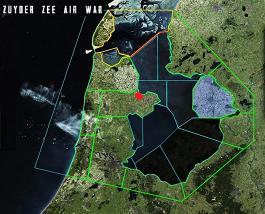
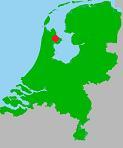
Relation with Lake (class): Former Lake Cemetery (FLC)
Total nr. of casualties buried here (TC): 2 end WW2, today: 0 (cleared).
Lake casualties, initially, end WW2 (LC-I): 2
Unknown today: 0
of which unknown from Lake (LC-U): 0
of which unknown from North Sea (NS-U): 0
Initial burial site in WW2: yes. LCC - LCW.
Post war burial site for collection and reburial from other sites: no
Cemetery with Lake casualties today: no.
WERVERSHOOF
Crew of aircraft crashed in the community of Wervershoof were not buried in Wervershoof during the first years of the war. The Germans took the bodies for burial to their air base at Bergen (aan Zee). This later changed when the base lost its importance and road transport became too dangerous because of Allied fighters looking for prey.
Wervershoof-Onderdijk has 3km of dike on Lake IJsselmeer (Old Zuyder Sea) in its care. Begin 1944, two airmen washed ashore here. Although there were already cemeteries for washed ashore Allied airmen in Medemblik (2km to the left) and two cemeteries in Andijk (1km to the right), Wervershoof, a separate and independent community, did not lay off responsibility for their war dead and buried the two airmen (Brown and Lister, see story futher below) on own territory. However, in 1984 the graves were moved to the Canadian War Cemetery in Groesbeek, near Nijmegen.
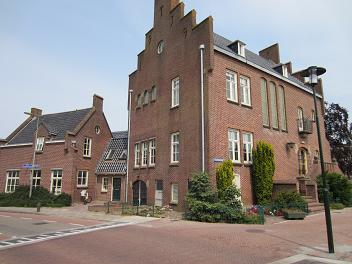
Dutch name cemetery: Gedenksteen Raadhuis Wervershoof.
Full name: Commemorative plaque Wervershoof.
Address (usable for car navigation):
Raadhuisplein.
For reaction or comments; send us an email,
see address and info at CONTACT.
Please use as subject title: 'Wervershoof'.
Already 2 years after the war, in 1947, a commemorative plaque was placed onto the wall of the city hall. The plaque reads 'FOR GOD AND COUNTRY FELL'. It remembers the inhabitants from Wervershoof killed in the war, as well as the Allied airmen that fell here. Back in 1947 the people did not have all the names. On the original plaque (photo further below) some are missing. At a moment of restoration the monument was updated with all names and were grouped into aircraft crews. Excellent work.

Names on the monument
Left column:
Crew of Wellington T2996, 103 Sqn, F/O Taffender, P/O Hardcastle, F/O Chisholm (New Zealand), F/Sgt. Greensides, Sgt. Burbridge, F/Sgt. Horniman.
Sgt. George Ewen (Aberdeen, Scotland), his aircraft was Whitley BD201, 10 OTU.
Centre: Citizens of Wervershoof
Right:
Crew of Wellington T3418, 150 Sqn: Sgt. Coombes, F/Sgt. Lewis, P/O Milne, Sgt. Ball (Canada) and F/O Pritchard.
Sgt. Clifford A. Brown. Lancaster W4272, 622 Sqn.
F/Sgt. Herbert S. Lister (Australia). Halifax JD271, 428 Sqn.
Photo below: The original 1947 plaque (before restoration). The headstones of the washed ashore airmen from Lake IJsselmeer that were buried in Wervershoof until 1984. They now rest next to each other in plot XII, row A, grave 2 and 3 on the Canadian War Cemetery in Groesbeek (next to the Reichswald Forrest, Dutch-German border, south-east of Nijmegen). Sgt. Clifford Althea Brown was crew of Lancaster W4272 and F/Sgt. Herbert S. Lister from Australia was crew of Halifax JD271. Both aircraft crashed nearby in the Lake and both have MIA crew members. There are no other airmen (identified or not) from Wervershoof buried next to Brown and Lister.
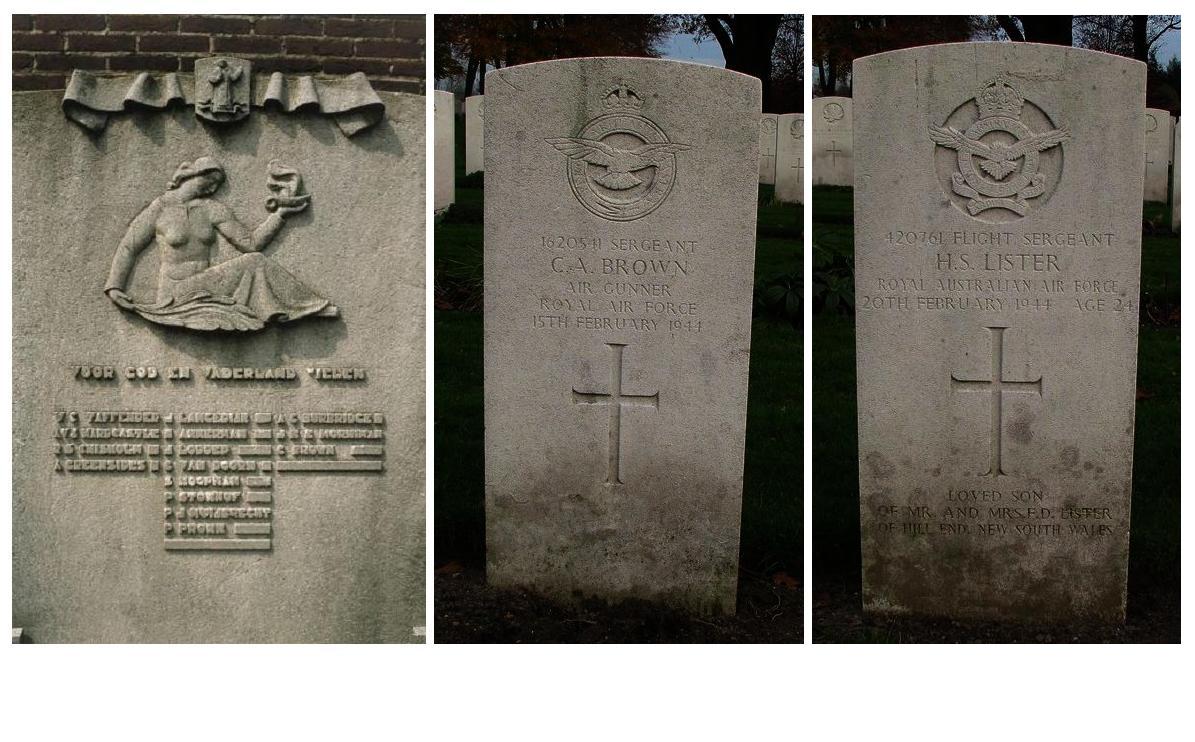
Wellington T2996 recovery 1966
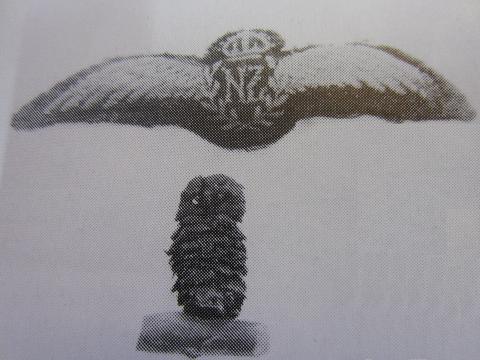
Wellington T2996 crashed in the night of 12/13 June 1941 south in the community of Wervershoof near hamlet Zwaagdijk. At the time only body of Sgt. Horniman was found and buried in Bergen (aan Zee). The rest of the aircraft was too deep in the mud. When the Germans received the names of Sgt. Horniman's crew members via the Red Cross, they placed a field grave marker on the wrecksite (see below).
In 1966 the Dutch army excavated the wrecksite up to 9 meters deep and in the mud and debris of the aircraft, the remains of the 5 missing crew members were found, together with 500 and one 1000-pound bomb. All skeletons were restored and each man could be identified. On pilot Robert S. Chisholm his New Zealand wings and a mascot owl were found, see image right.
The men were buried next to each other in plot 23, row I, on the Commonwealth War Cemetery Jonkerbos in Nijmegen.
Further below: the headstone of F/O Chisholm.
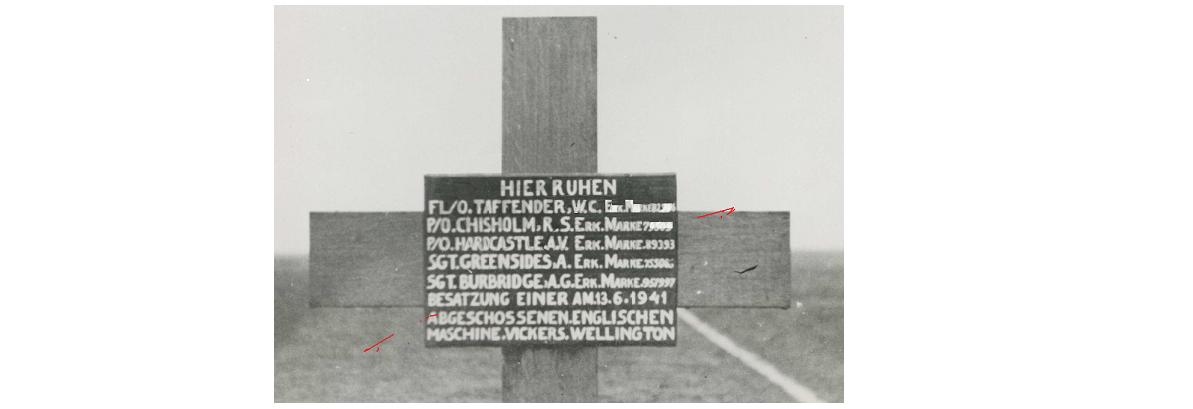
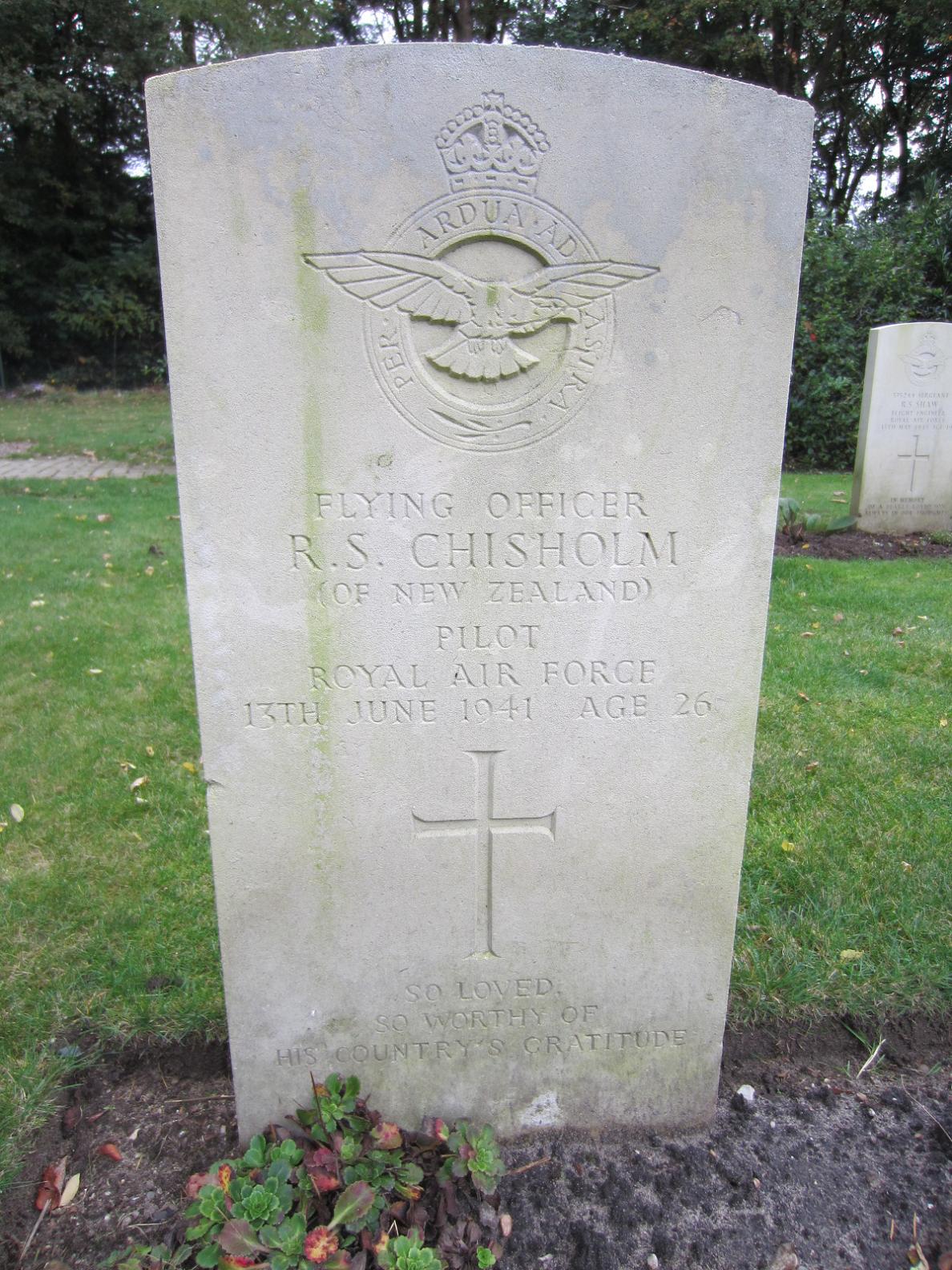
Sources:
- Site: 4en5mei.nl/monumenten
- Book 'In de schaduw van de glorie', by S.L. Veenstra. 1992.
- Site CWGC
© ZZairwar (Zuyder Zee Air War).
File 910. Wervershoof Allied War Graves 1945
- Details